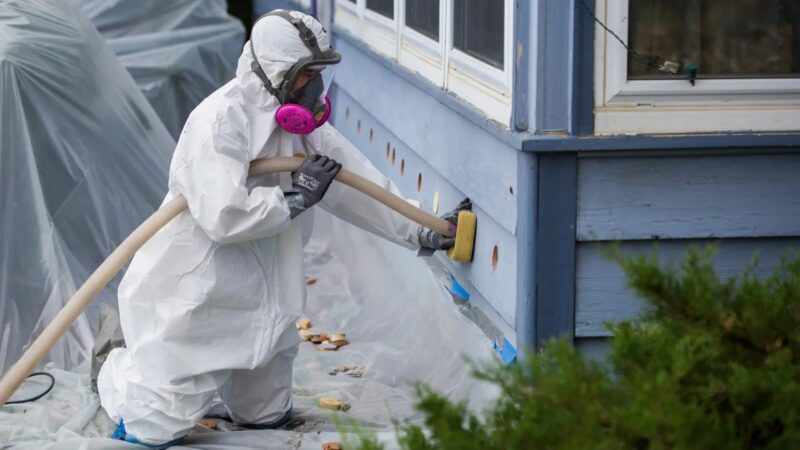Maine weatherization contractors are scrambling to hire and expand as state incentives and soaring oil prices cause a surge in demand for their services.
Contractors registered with Efficiency Maine, the major administrator of efficiency programs in the state, are on pace to insulate twice as many houses this year as last. The average wait time to receive services is now close to three months.
“Every contractor is fully booked,” said Andy Meyer, senior program manager for Efficiency Maine. “Most for months, some for more than that.”
Weatherization is one of the strategies Maine is using in its efforts to cut emissions by 80% by 2050. The state has set a goal of weatherizing 35,000 homes by 2030. And in the past year, several factors have converged to pique consumers’ interest in implementing such measures.
At the beginning of 2022, Efficiency Maine increased its rebates for weatherization services, boosting the rebate rate from 30% to 50% and the lifetime cap on rebates from $3,500 to $5,500. In concert, it launched a $1 million marketing campaign spreading awareness of the incentive program.
Then, fossil fuel prices shot up: The price of heating oil more than doubled from May 2021 to the same month this year, bringing the cost of filling a standard tank over $1,500 in a state where 60% of homes use heating oil.
Now, record numbers of homeowners are interested in better insulating and sealing their homes to cut down on fuel use and costs. By June of this year, requests for rebates were up 254% over June 2021.
Raising wages to recruit workers
Even before this surge in interest, Maine’s energy efficiency companies had identified employee scarcity as an obstacle to growth, a dynamic made even worse by the COVID-19 pandemic. Now growing demand has translated into a pressing need for more employees.
“We are by far the busiest we’ve ever been,” said Kristie Green, co-owner of Horizon Homes, an efficiency services company based in Westbrook, Maine. “We’re employing about twice as many people as we were a year ago and adding a crew every month or so.”
While Horizon is now hiring successfully, it took some effort to figure out the right formula to recruit and retain workers. In the end, Green said, the answer for them was quite simple: money. Earlier this year, the company was having trouble hiring for weatherization roles, despite increasing pay rates. Then the company noted that workers in similarly skilled trades, like roofers and drywallers, were still paid significantly more than weatherization employees.
“Ultimately it is about weatherization techs being paid on par with other tradesmen. So we did that,” Green said. “And all of a sudden we get more applications. Our retention was always good but it got better.”
The state’s incentives are essential to Horizon’s ability to offer these higher pay rates, she said. Higher rebates drive more demand, generating more business and ensuring a level of income that allows the company to pay more attractive rates.
It is this pattern Efficiency Maine is counting on. Meyer points to the development of the market and workforce in the heat pump installation field as a template for what is likely to happen in weatherization work as well. Recruiting may be more difficult in the early stages of a market expansion. But as employers gain confidence that demand is likely to continue, they are more willing to raise wages and invest in workforce development.
“These tend to be very entrepreneurial business owners,” Meyer said. “If demand exists, they will find talent or grow talent — they’ll make things happen.”
Building a pipeline
The state is also making an effort to introduce more residents to clean energy work and prepare them for careers in the field. In the fall, Gov. Janet Mills announced the commitment of $4 million to a Clean Energy Workforce Partnership intended to prepare more Maine residents for careers in clean energy. While the plan covers all sectors of clean energy work, energy efficiency employees make up nearly 60% of the clean energy workforce in the state.
The state recently solicited proposals for initiatives that are designed to advance workforce training and development in the field.
“It’s really aimed at, ‘How do we get people into that space?’” said Dan Burgess, director of the governor’s energy office.
Apprenticeships could be an element in developing a robust pipeline of potential efficiency workers, said Francis Eanes, executive director of the Maine Labor Climate Council. Because apprenticeship programs pay trainees as they learn a trade hands-on, workers can launch or switch careers while still earning, while employers get more hands in the field.
“There are real, material contributions that come from ramping up apprenticeship programs,” Eanes said.
To encourage more people to consider trade apprenticeships, the state is pushing more pre-apprenticeship programs: brief courses that expose potential trainees to the trades, teach some basic math literacy, work on soft skills that are important in any employment field, and help with placement in apprenticeships in the trades. Participants could be high school or community college students or other young adults.
The state recently adopted legislation to make pre-apprenticeship training more accessible to people from all backgrounds by providing funds to allow these programs to offer stipends, transportation, child care, and reimbursement of other expenses. A pilot pre-apprenticeship program — a partnership between Maine State Building and Construction Trades, the Maine AFL-CIO, and several community groups — is now recruiting participants from traditionally underrepresented groups to start a 120-hour course of study this fall. The program will help trainees prepare for any of the trades, though clean energy and efficiency roles are expected to make up a significant portion of the placements.
“Folks aren’t excluded because of parenting or structural poverty,” Eanes said. “And once you’re graduated, you are in that trade and that’s an amazing career opportunity.”
This story originally appeared in Energy News Network and is republished here with permission.




